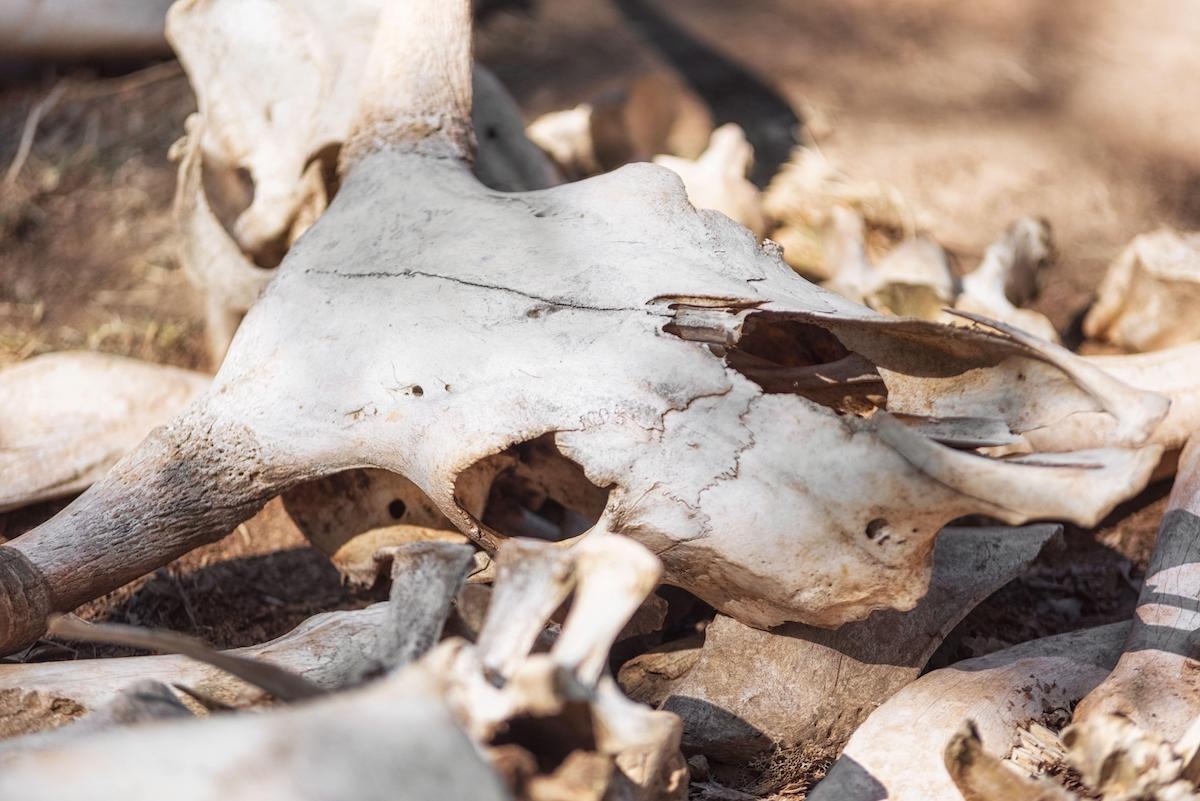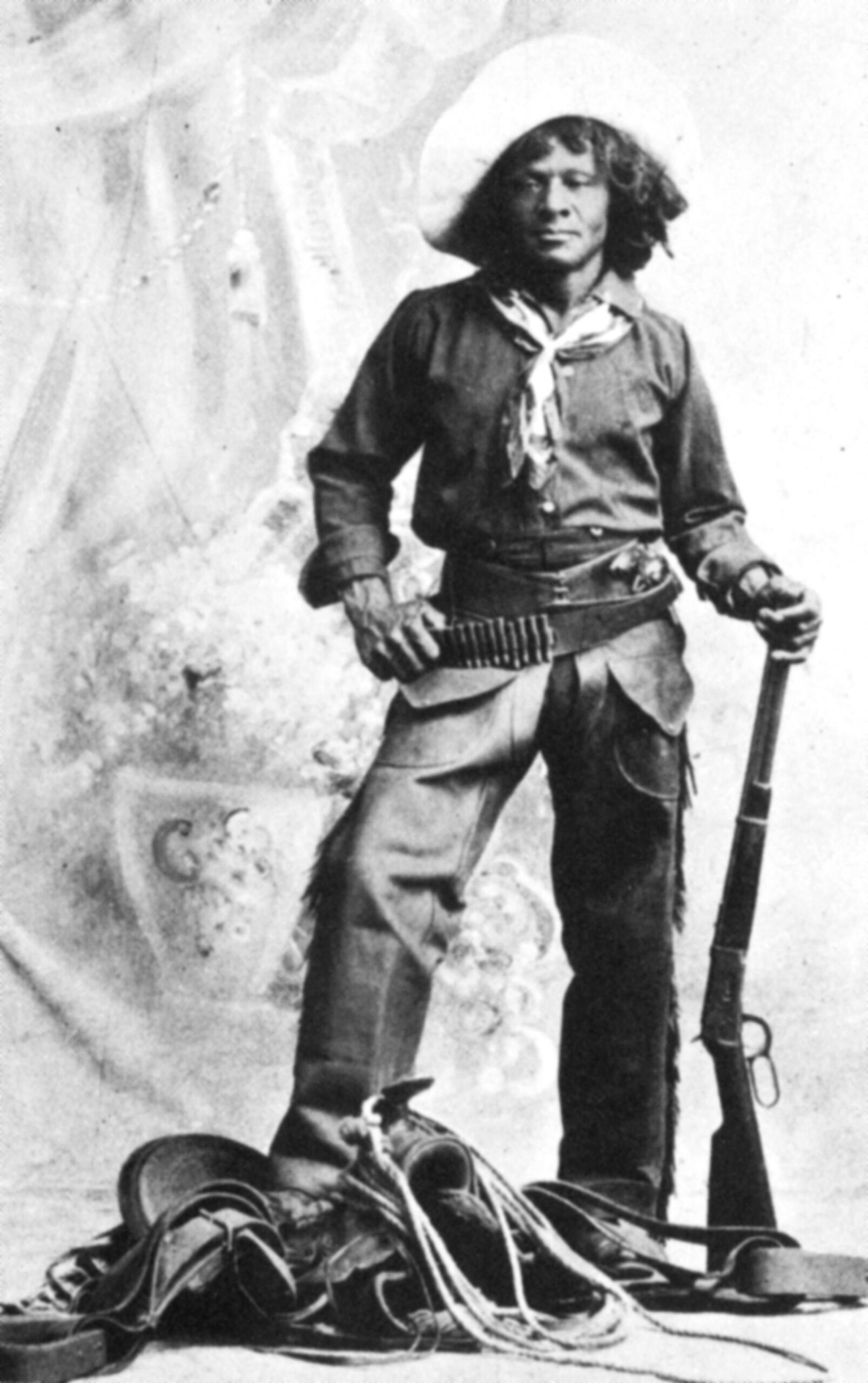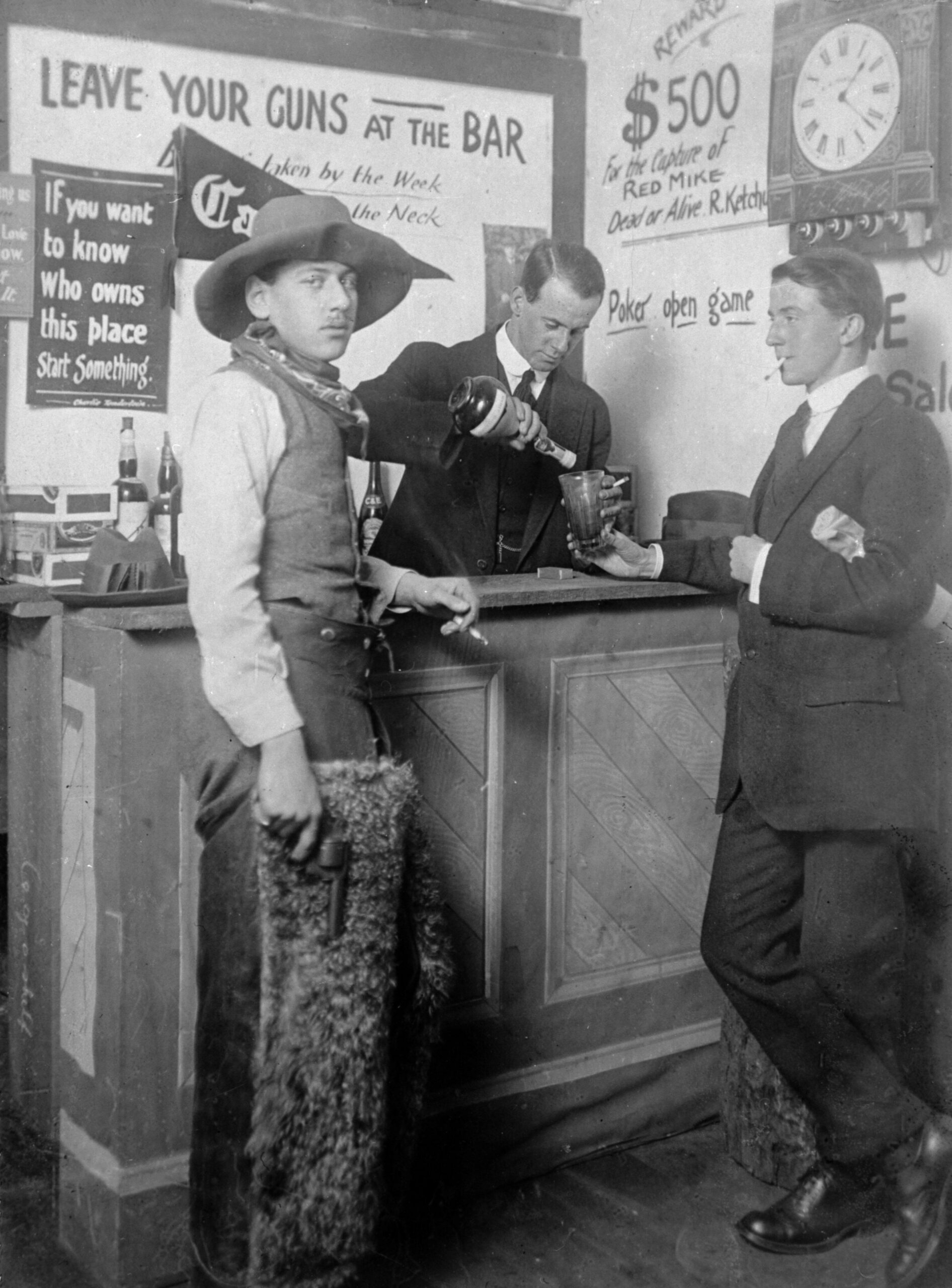features
Black History Month US: How food teaches us about the lives of African-American cowboys
18 Mar 2022
6m
Turn on a film about the Old West, and the likelihood is you won’t see an African-American.
But the truth is one in four cowboys were actually Black in the 1870s and 80s, and their stories have been more-or-less erased from history.
Keen to learn more about Black cowboys, and what was on their plates, Twisted spoke to US culinary historian, Adrian Miller for American Black History Month.
Whilst their history is still hugely under-researched, we’re able to get a glimpse into their lives through the food they ate.

Isom Dart (1849-1900), born Ned Huddleston –a famous horse and cattle rustler during the 19th century (Credit: Alamy)
READ MORE: Black Food Fridays star KJ Kearney explains why food is political
Equality on the ranch
The history books may not say it, but the methods of cattle herders and raisers from West Africa actually informed how many white cowboys came to do their jobs.
However, a large number of African Americans also moved West and took up the job following the Civil War, and the 1863 emancipation proclamation – in part, because they were still not able to buy land or get many jobs in the South.
At this time, it was common for African-Americans to live in desperate poverty, entering the free world without having been afforded the right to education or wages.
It’s no surprise, then, that the Old West symbolised freedom, autonomy and a new beginning.
And at least in part, that’s what many Black cowboys got on the ranch. Not only were they paid the same, and subjected to equal living conditions to their white counterparts, but they also shared the same meals.
“The Black cowboys and the white cowboys were both hired hands, and ate more or less the same foods whilst out on the trails,” explains Miller. “Unlike it was in the South, where African Americans dominated all types of cooking, on the cowboy trails, you had white cooks as well.”
Such equality when it came to cooking and eating would have felt quite radical to many of the cowboys who had previously been enslaved, even if the food they were all eating was far from desirable.
There wasn’t much to go around, but what they had, they shared. Meals were likely, for some, a symbol of long-due respect.
Eating on the trail
The Old West may have presented many with liberty and even a semblance of equality, but the mouldy, maggot-ridden food they clung onto for weeks at a time is all evidence that, at least some of the time, such a life for Black cowboys was still no utopia.
“From the accounts that we get, they were not eating high end food,” laughs Miller. “A lot of the stuff that they had was preserved foods that were built for the eventuality that they would not be able to have fresh food, [because] they’d be out there on the job for a long time.”
Typical meals included hardtack bread (which is more like a biscuit, made from flour and water), and then dried meats (jerky), beans and coffee.

Fresh supplies would often have to be hunted or you’d go without (Credit: Alamy)
“Every once in a while they had some luxuries, like tinned food – sardines or something like that,” the expert adds. “And depending on where they were, they could probably fish or forage to get some other stuff.
“But most of the time [in terms of fresh food] they were just eating cured pork belly (prepared this way to preserve freshness) and bison meat, stretched as far as it would go.
“This was rough stuff. It was nasty – barely digestible. It was about sustenance. They were eating all the cuts: the tongue, organ meats – anything that they could eat, they would eat.
“The hard bread would sometimes have worms in it, and if they didn’t have fuel, like wood or other stuff, they would take buffalo chips (which are dried buffalo faeces) and they would burn that. Who knows what kind of flavour that imparts?
“It was really tough”.
Nat Love, who is perhaps the Old West’s most famous African-American cowboy, paints a rather monotonous picture of consuming such meats.
“Buffalo meat for breakfast, dinner and supper every day without bread or salt is not the most palatable bill of fare,” he writes, in his 1906 memoir.
“Especially when it is all we had, day after day, without any prospect of change until we got home”.

Nat Love talked about the food he ate whilst on the trail (Credit: Alamy)
READ MORE: Michael Twitty on Black food culture and how to cook Southern food
Cowboys’ food origins
Indeed, there was little room for inspiration or flare in the food enjoyed by cowboys, whatever the colour of their skin. But when they picked their rations, Miller says small discrepancies were telling.
“I did talk to an expert and he said that it was more often that Black Cowboys would try to get rice in their rations,” he says. “This would evoke the traditions that they had in the South.
“A number of African-Americans descended from people from Rice country in West Africa. So you interestingly see this preference, travelling through”.
It also remains fascinating to examine the inspirations behind some of the dishes pulled together from virtually nothing.
Several historians suggest that some early cowboys may have been trained by Vaqueros (Mexican cowboys who travelled into California between 1687 and 1774), or perhaps picked up tips from cattle raising Native Americans.

Vaqueros (left) and Native American Indians may well have trained some Black cowboys (Credit: Alamy)
It’s not surprising, then, that we see their influence behind some typical cowboy meals.
For one, the the buffalo Nat Love complained about may well have been served in a chilli – although, not the fancy kind, namely chunks of meat and gravy, cooked in a cast iron pot, over a fire.
“That’s a dish that they could have gotten from [vaqueros],” says Miller. “And there were certainly corn breads being eaten, too – that’s Native American in influence.”
Through such dishes, we are given a window into the historical links that cowboys have to other non-white cultures, and we’re offered a glimpse at the much untold diversity of their origins.
Discrimination in towns
After eating hellishly dull, if not physically sickening, food on their trails, it’s not surprising that the opportunity to dine out at bars and restaurants would have been welcomed when cowboys finally reached civilisation.
“These guys were so happy when they pulled into a trading post or some kind of fort that had a restaurant,” says Miller.
But such happiness would sometimes be short-lived for Black cowboys.
Historian Kenneth Porter writes, in his book on the topic, that several Black cowboys would be barred entry, or would have to purchase food from the back door of eateries, because of existing racism.
“There are plenty of experiences of black cowboys saying that they were refused service, or, you know, having to order from a window,” Miller concurs. “Then, we have pictures of others being treated as equals.

Some saloons wouldn’t cater to Black cowboys (Credit: Alamy)
“But, given the times, I think it’s an educated guess to say they were denied service more often than not.”
It’s hard to imagine what a bitter pill to swallow this would be after weeks, if not months of sharing food, shelter and sometimes even blankets with other white cowboys.
“The one saving grace is that in a lot of the bigger areas, there were often African-Americans that had started food businesses,” Miller adds. “So, there were Black saloons and Black restaurants.
“They weren’t numerous, so when you turned up, you just had to hope there were some Black people there, doing that.”
Food as a symbol of camaraderie
It’s certainly interesting to consider that meal times on the trail were often more inclusive than those in the so-called ‘real world’, and such a revelation offers just one example of the possible appeal of such a lifestyle, in spite of all its shortcomings.
Of course, to say that racism didn’t exist on ranches would be a sweeping generalisation – it did, as is evidenced by Black cowboys’ treatment at saloons, and several accounts in which they talk about being handed less desirable jobs than their white peers.
But the little we know about the food eaten by Black cowboys does paint a picture of a slightly more egalitarian environment, and maybe even one in which they felt hope.
To share such food, some of which was undoubtedly stomach-churning, no doubt fostered a feeling of camaraderie.

Denzel Washington in The Magnificent Seven (Credit: Columbia Pictures)
“For Black and white cowboys, it does seem like their lives were, in many ways, similar,” Miller concludes. “Even though they did encounter racism, generally speaking, African-Americans had more opportunity.
“Looking at the food consumed kind of deepens the legend about some of these people. It connects you to this mythical past.”



.jpg_dU0O4c?tr=w-2560,f-webp,q-70)